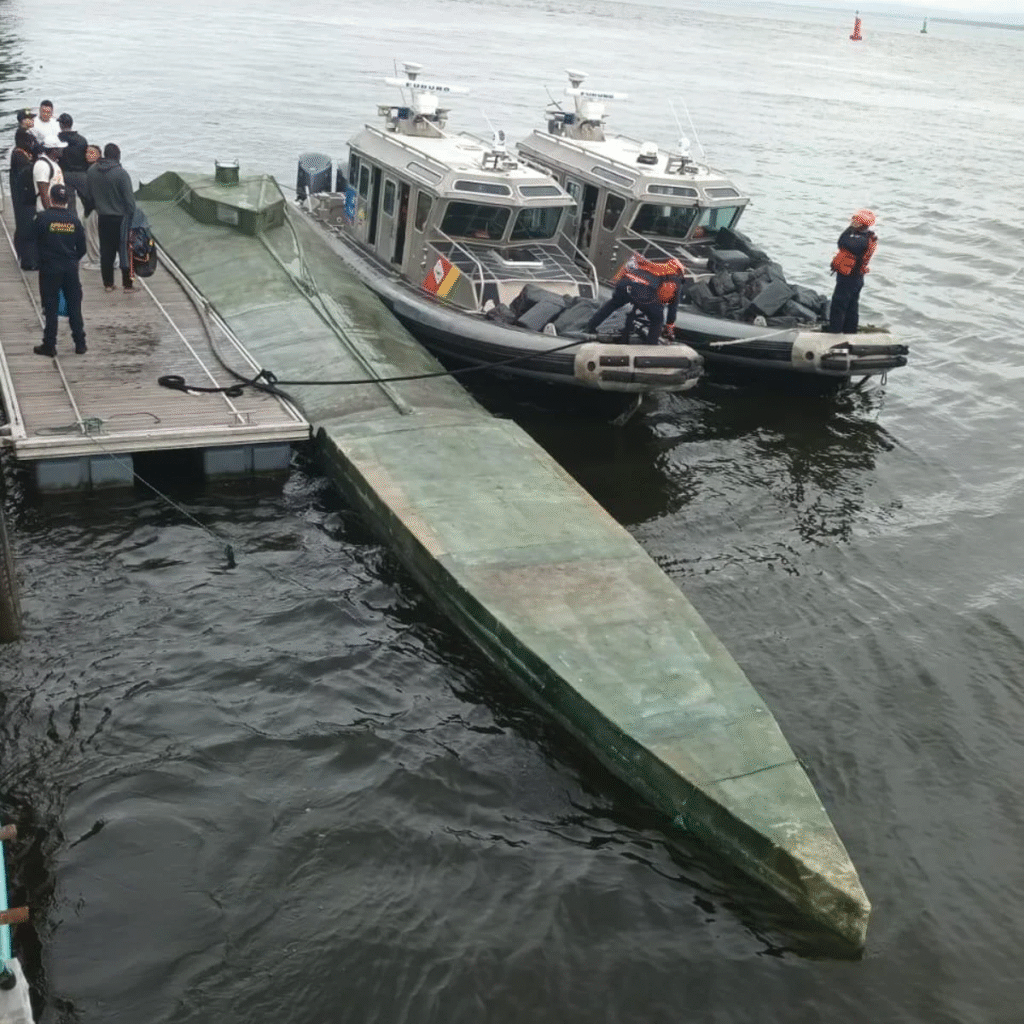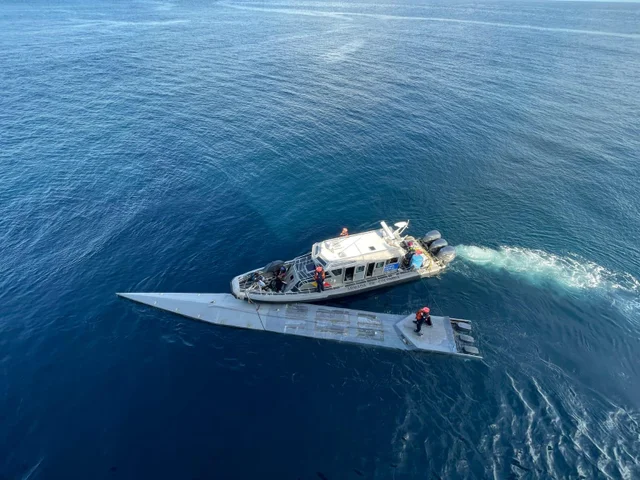In a groundbreaking development in the war on drugs, the Colombian Navy has seized its first unmanned “narco sub”—a low-profile, semi-submersible vessel believed to be a test unit for cocaine smuggling operations.
The vessel, intercepted off the coast of Tayrona National Park near Santa Marta, was found empty but equipped with a Starlink satellite antenna, allowing for remote communication and possible GPS navigation.
The Navy, along with Western security experts, say this suggests a trial run by the notorious Gulf Clan, Colombia’s most powerful drug trafficking organisation.
“It was being tested and was empty,” a Navy spokesperson told AFP. “We believe this is part of a shift toward unmanned, harder-to-detect trafficking systems.”
The Starlink-powered drone vessel, with an estimated cargo capacity of 1.5 tons of cocaine, represents a significant leap in narco-technology. Authorities now fear that cartels are embracing AI navigation, satellite comms, and remote-control tactics to evade capture and accountability.

This marks the first confirmed seizure of a drone narco-sub in South American waters, following a similar operation by Italian police in May 2024.
Last year, Indian police intercepted a Starlink-guided methamphetamine shipment near the Andaman Islands, valued at $4.25 billion.
A Deadly Evolution
The use of unmanned submarines reflects what Colombian Admiral Juan Ricardo Rozo described as a “migration toward more sophisticated systems”, which allow criminal groups to operate partially autonomously.
These semi-submersibles, long built in jungle shipyards, have traditionally ferried drugs north to Central America and Mexico. Now, they are crossing the Atlantic and Pacific.
“These vessels are nearly invisible to radar, and without a crew on board, there’s no one to interrogate,” said Henry Shuldiner of InSight Crime. “It makes prosecutions difficult and detection harder.”

Colombian drug traffickers have long relied on manned subs often makeshift vessels with crude ventilation and deadly risks. In 2023, one such sub was intercepted with two dead bodies and nearly three tons of cocaine aboard.
Unmanned vessels eliminate this risk and reduce the operational cost of losing skilled crew to death or arrest. According to Juana Cabezas, a researcher at the Institute for Development and Peace Studies, Mexican cartels have been developing unmanned submarines since at least 2017, hiring engineers and tech experts to design “ghost ships.”
A Global Threat
So far in 2024–2025, a record number of narco subs have been intercepted across oceans:
- 5 tons of cocaine headed to Australia in November.
- 6.5 tons seized off the Azores Islands in March.
- 3.5 tons captured by Mexico’s navy just last week.
The global spread of narco subs, increasingly equipped with advanced tech like Starlink, has prompted new international conversations about maritime surveillance, tech regulation, and transnational cartel networks.
Despite aggressive maritime operations, legal tools remain limited. In Colombia, building, owning, or operating a narco sub carries up to 14 years in prison but as crews are removed, accountability becomes nearly impossible.



















